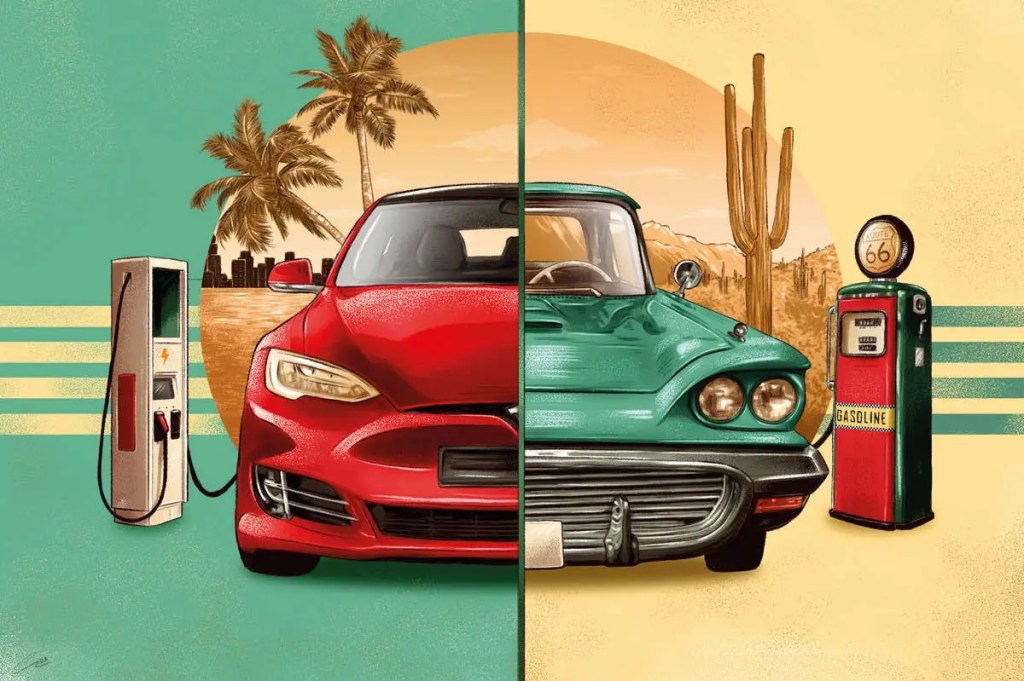A lead article in the sober-sided New York Times is seldom funny. Yet “A New Surge in Power Use is Threatening US Climate Goals” cracked me up. Check out this sternly dramatic first paragraph: “Something unusual is happening in America. Demand for electricity, which has stayed largely flat for two decades, has begun to surge.” Personally, I’d have headlined that article “Well, duh” — perhaps with the subhead “Aw, shucks.”
Lo and behold, when you push people to electrify everything in their lives — cars, cookers, heating systems — while bribing them to go all-electric with lavish government subsidies, it turns out they use more electricity. Who would have thought? I guess this is why we need all those brainiac experts to analyze the ultra-complicated technical details of environmental policy.
One such expert worries in the Times: “The numbers we’re seeing are pretty crazy.” America’s paper of record warns that in the past year the nation’s utilities have nearly doubled their estimates of how much more power they’ll need to provide in the next five years, during which an extra California’s worth of demand will be dumped on the US grid. So allow me to lead you through all the “well, duh” bullet points of this hugely entertaining piece.
Electric vehicles need electricity. Surprise! Apparently simply stippling the landscape with new EV chargers, which Joe Biden’s farcically titled Inflation Reduction Act is meant to finance, isn’t quite enough. Gosh, darn it. Nobody pointed out that the chargers have to be connected to actual electricity. So far, it looks as if no one in government has worried about where it will all come from. Oh well. That’s understandable. These important people have so many other weighty matters on their minds.
Burning fossil fuels to not burn fossil fuels is a tad inconsistent. Utilities all over the US are busy building gas-fired power plants to meet rising demand for electricity, when the whole point of this exorbitant energy “decarbonization” is to stop burning the likes of gas. The Times calls it an “ironic twist” that the demand for electricity from green technology is imperiling the whole point of green technology, but I call that instead “wholly foreseeable.” And I call this comical: one Kansas utility is keeping a coal-fired plant online that it had planned to retire – the better to power a giant EV battery factory.
Making electric vehicles, solar panels and wind turbines requires electricity. In calculations of these technologies’ carbon-emission savings, rarely do we see the considerable emissions from the production of all this hardware subtracted. Neither do we see subtracted the energy required to junk or recycle all this hardware once it’s defunct. Much less do we hear mention that much of this equipment (see “a tad inconsistent” above) is made in China with power generated from coal.
When you throw trillions of government dollars at reviving manufacturing, you get more manufacturing. Biden’s Inflation Reduction and CHIPS Acts, intended to incentivize more production at home, seem to be having unintended consequences: more production at home. That’s a problem because none of the geniuses at the White House have been accounting for the fact that, wait for it:
Manufacturing requires electricity. Investment in American manufacturing is hitting a fifty-year high, thanks in part to Biden tax breaks for chip and clean-energy production. Good economic news; bad news for the grid. California has already seen blackouts. The North American Electric Reliability Corporation recently reported that unless more power comes online pronto, whole swaths of the US could soon go dark. Yet everything new-fangled seems to draw ever more juice. Another NYT headline from October: “AI Could Soon Need as Much Electricity as an Entire Country.”
Intermittent wind and solar power require fossil fuel back-up. Now, most of us are bored witless from reading repeatedly that “when the wind doesn’t blow and the sun doesn’t shine” some unreasonable people still expect to flip a switch and have a light come on. But NYT journalists haven’t been reading the same tiresome articles we have. “In interviews,” our article explains, “utility executives say gas is needed to back up wind and solar power, which don’t run all the time.” See, to come to this astonishing conclusion, they had to conduct interviews.
Besides panels and turbines, green energy needs other stuff. Connecting solar and wind farms to the grid (which can take five years or more) requires expensive, environmentally intrusive high-voltage transmission lines, only 251 miles of which were completed last year (mind, the US is 2,800 miles across), a rate that’s been steadily trending downwards. The US has neither the cables nor the transformers required to even begin to meet rising electricity demand with clean energy. Getting approval for transmission lines is complex and time-consuming, as they often meet fierce local opposition and cross state lines, thereby involving multiple bureaucracies. Which brings us to a less obvious “well, duh”:
When you install shedloads of regulations, you obstruct your own policies. Generating enough electricity for net zero is frustrated by the very protracted, paperwork-laden processes that America’s Democratic governments are so fond of. Nuclear power plants can take twenty to twenty-five years to build in the US because the onerous approval procedures are antagonistic. Biden has pledged, absurdly, to generate all America’s electricity from wind, solar and nuclear by 2035. The infamous “administrative state” stymies its own lofty objectives.
We’re all being victimized by denial, wishful thinking, dogmatism rather than idealism and rank incompetence. To forestall climate change, wildly impractical energy policies jeopardize the very populations they’re meant to protect. An executive at Grid Strategies says, “Right now everyone’s getting caught flat-footed” by a rising demand for electricity that a five-year-old child could have predicted years ago. At least I’ve found an article on a conventionally dry subject that makes me laugh. But laughter comes in different flavors, and this har-har-har is bitter.
This article was originally published in The Spectator’s May 2024 World edition.


























Leave a Reply